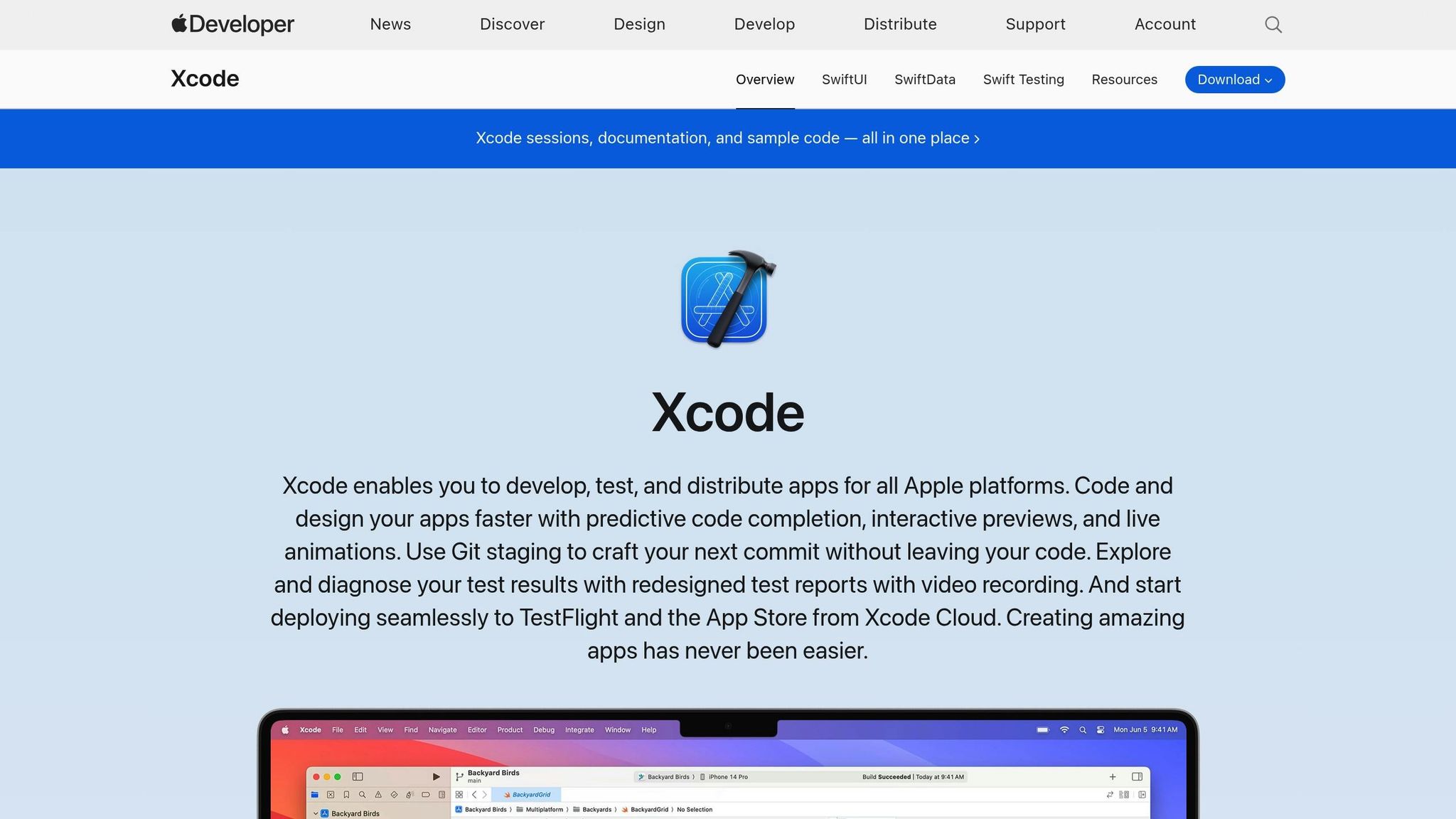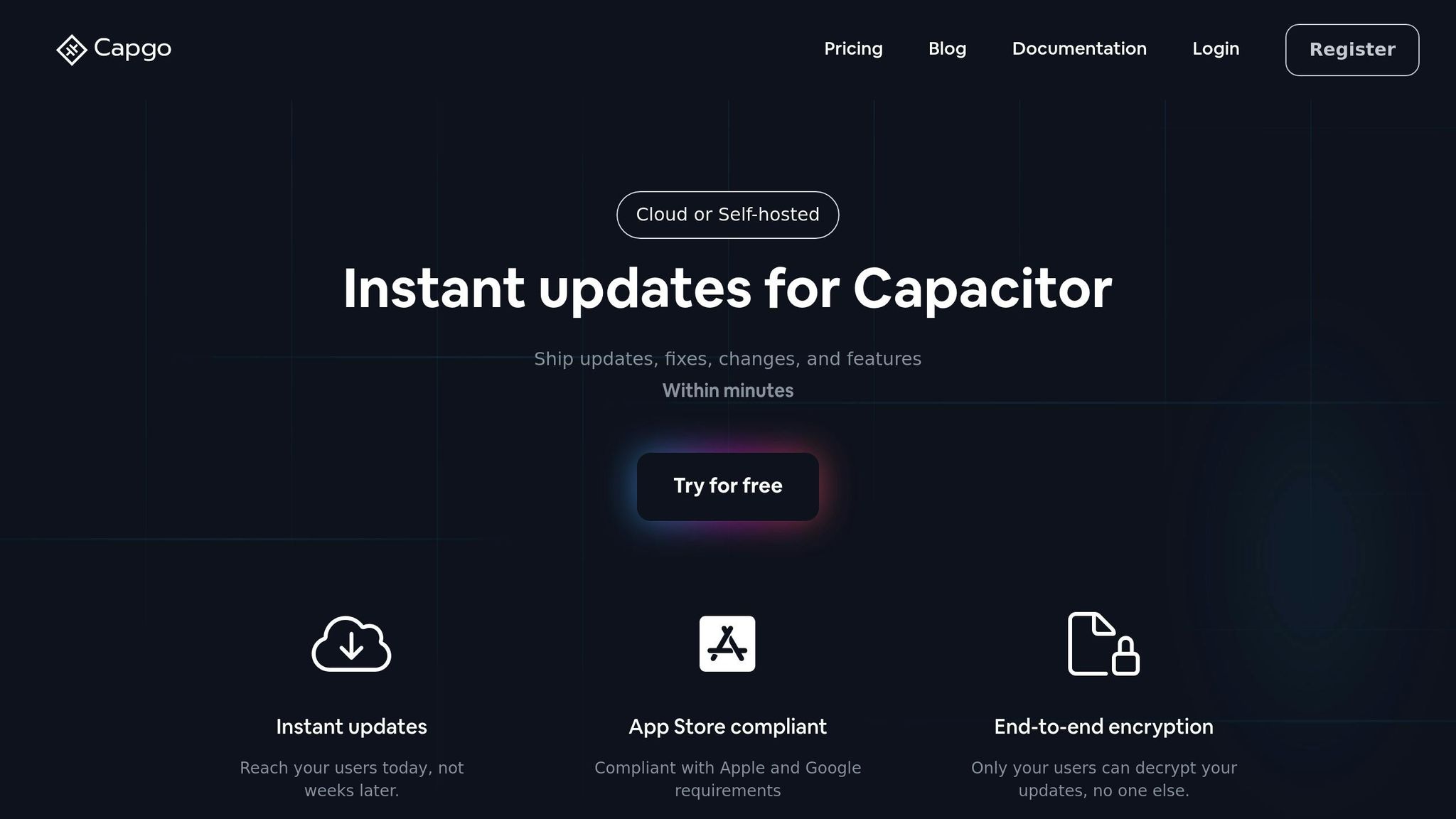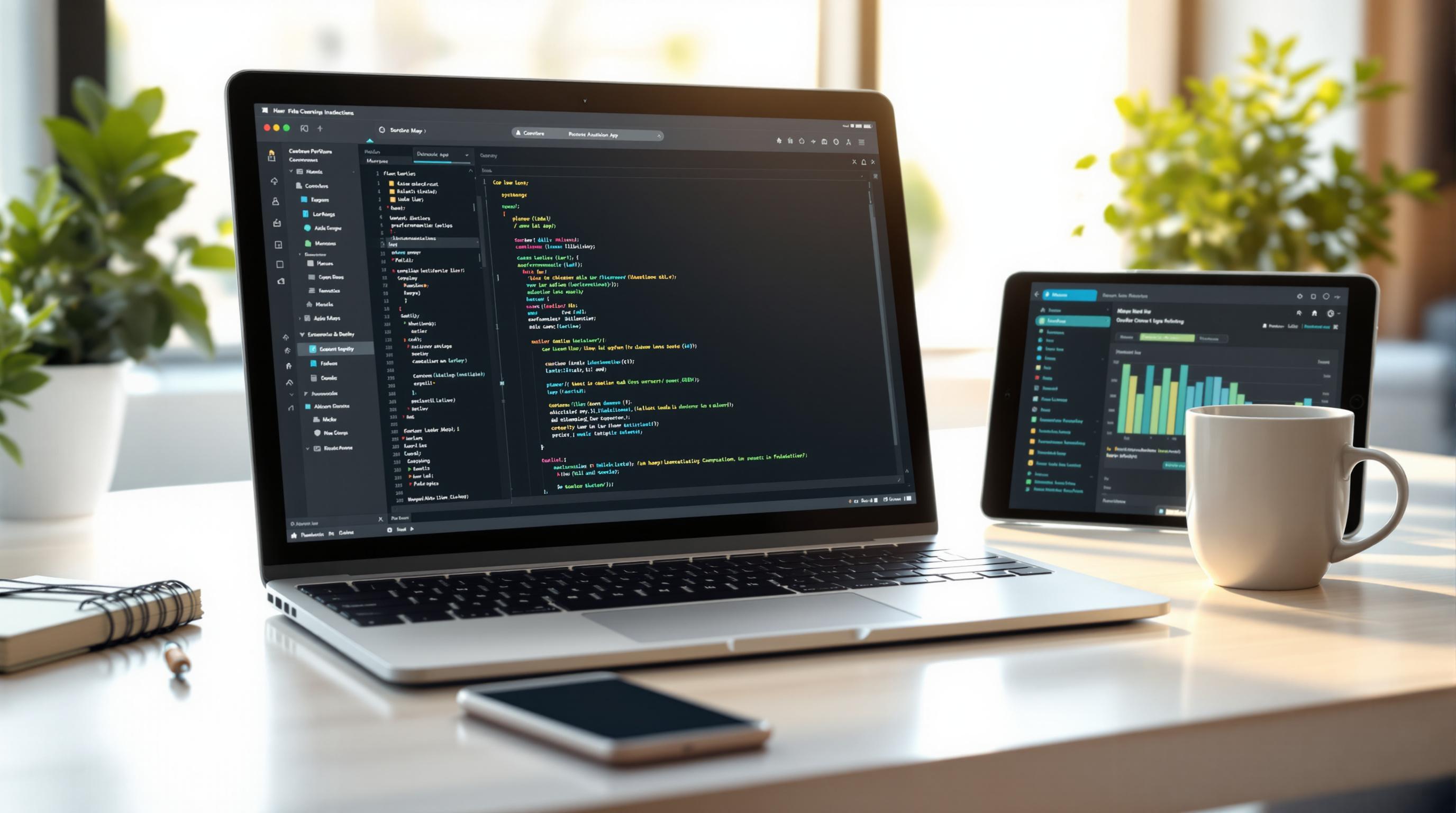Profiling cross-platform apps built with Capacitor helps you identify performance issues across iOS, Android, and web platforms. Here’s a quick guide to get started:
-
Tools You Need:
- Node.js v16+ and npm v8+ for package management
- Capacitor CLI v5.0+ for building and deploying apps
- Xcode 14+ (iOS) and Android Studio Electric Eel+ (Android) for platform-specific development and profiling
- Chrome DevTools for web performance analysis
-
Devices:
- Use emulators for quick testing but rely on physical devices to get accurate performance metrics.
-
Key Profiling Tools:
- Chrome DevTools: Analyze JavaScript execution, memory usage, and network activity for web apps.
- Xcode Instruments: Measure CPU, memory, and energy usage on iOS.
- Android Studio Profilers: Monitor CPU, memory, and network performance on Android.
-
Common Issues to Fix:
- Large app bundle sizes
- Unoptimized code
- Excessive JavaScript-to-native bridge calls
-
Optimizations:
- Implement partial bundle updates and live updates to improve performance and user experience.
- Track performance metrics and errors in real time using tools like Capgo.
This article walks you through using platform-specific tools, finding performance bottlenecks, and applying fixes to optimize your Capacitor apps.
How to find MEMORY LEAKS in Ionic Angular Apps
Setup Requirements
To profile Capacitor apps effectively, you’ll need the right tools, software, and testing environments. Here’s what you need for accurate performance analysis.
Tools and Software
Make sure you have the following:
- Node.js v16+ with npm v8+ for managing packages
- Capacitor CLI (v5.0+) to build and deploy apps
- Xcode 14+ for iOS development and profiling
- Android Studio Electric Eel (or newer) for Android development
- Chrome DevTools for web performance profiling
Once your tools are ready, it’s time to choose your testing devices.
Emulators vs Physical Devices
- Emulators: Great for quick testing, debugging, and trying different device configurations. However, they don’t fully replicate real-world performance and have limited GPU support.
- Physical Devices: Essential for accurate memory and GPU metrics. While they can be more expensive and require additional management, they provide a much clearer picture of how your app will perform.
For best results, test on at least one recent iOS device and one mid-range Android device to cover a range of performance scenarios.
Performance Monitoring Tools
Use these tools to monitor and analyze performance:
- Instruments (iOS), Android Studio CPU Profiler, and Chrome DevTools for platform-specific profiling
- Capgo for cross-platform analytics and real-time error tracking [2]
Lastly, configure logging in both development and production environments to track consistent metrics.
Profiling Tools by Platform
Leverage the built-in tools of each platform to analyze performance and identify potential issues.
Web Profiling with Chrome DevTools
While running your app in Chrome, open DevTools (Right-click > Inspect) and explore the Performance, Memory, or Network tabs:
- Performance: Track JavaScript execution, rendering, and network activity.
- Memory: Analyze heap allocations and detect memory leaks.
- Network: Observe API calls, asset loading, and bandwidth usage.
For more detailed JavaScript profiling, use the Performance panel’s CPU profile feature. To capture in-depth function call data, enable the “JavaScript Profiler” option in the settings.
Once web profiling is complete, move on to iOS performance analysis.
iOS Profiling with Xcode

In Xcode, navigate to Product > Profile (⌘I) and select a profiling template:
- Time Profiler: Measure CPU usage.
- Allocations: Monitor memory usage.
- Energy Log: Evaluate battery consumption and network activity.
Pay special attention to WebView rendering times to assess app responsiveness.
After iOS profiling, shift focus to Android performance.
Android Profiling Tools
In Android Studio, access profiling tools via View > Tool Windows > App Inspection. Key profilers include:
- CPU Profiler: Analyze thread activity, method traces, and CPU usage.
- Memory Profiler: Track heap allocations, garbage collection, and memory leaks.
- Network Profiler: Review request timing and payload sizes.
For apps using WebView, enable debugging with WebView.setWebContentsDebuggingEnabled(true) to integrate Chrome DevTools alongside Android Studio for a more comprehensive analysis.
Finding and Fixing Performance Issues
Bottlenecks
Common performance issues in Capacitor apps often stem from large bundle sizes, unminified code, and excessive overhead from bridge calls. These factors can slow down your app and impact the user experience.
Analyzing Profiles
To pinpoint performance problems, tools like Chrome DevTools, Xcode Instruments, and Android Studio profilers are invaluable. Use them to track down CPU spikes, memory leaks, and delays in network requests. Once you’ve identified these problem areas, you can focus on specific fixes.
Performance Fixes
After gathering data from profiling tools, implement these targeted optimizations:
- Partial bundle updates: Instead of full updates, deliver smaller, incremental updates. For example, Capgo’s CDN can deliver a 5 MB update in just 114 ms [1].
- Controlled rollouts: Use user segmentation to roll out updates gradually. This method can achieve 95% update adoption within 24 hours [1].
- Error tracking: Detect and fix errors early to maintain app stability and performance [1].
- Bridge call batching: Reduce overhead by grouping JavaScript-to-native bridge calls.
- Live updates: Push immediate fixes using live update solutions (e.g., Capgo), bypassing app store delays.
Monitoring and Updates
Once you’ve made performance improvements, it’s crucial to keep an eye on things and maintain a system for live updates to ensure everything stays on track.
Real-Time Performance Tracking
Post-deployment, keep tabs on important metrics like API response times, update success rates, and user engagement. Use tools like automated dashboards or error-tracking software to gather this data in real time. This allows you to spot and address issues quickly, preventing them from impacting a large number of users.
Fast Updates with Capgo

Capgo simplifies the update process by offering encrypted, staged updates with automatic rollback features. It also provides real-time analytics, helping you bypass app store delays and ensuring updates reach your users quickly and efficiently.
Summary
Use tools like Chrome DevTools, Xcode Instruments, and Android Studio Profiler to fine-tune your Capacitor apps. Keep an eye on key metrics and roll out live updates when needed. Here’s what to focus on:
- Profile consistently using platform-specific tools (Chrome DevTools, Xcode, Android Studio Profiler).
- Track performance and errors in real time across all platforms.
- Deploy live updates in stages to introduce bug fixes and new features smoothly.




